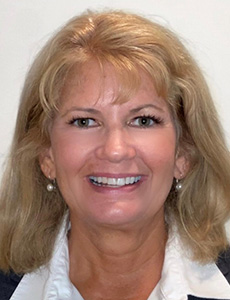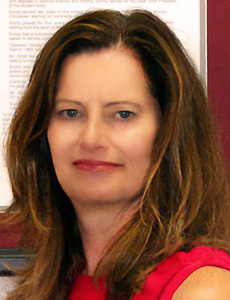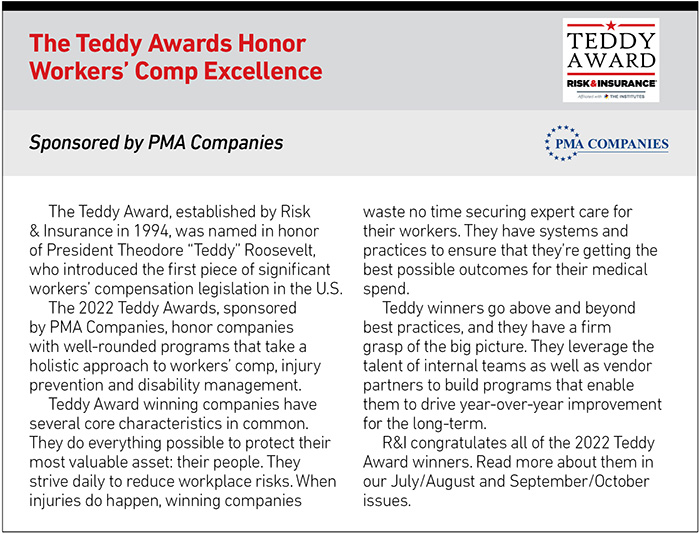How The Elwyn Foundation Changed Its Narrative and Developed an Award-Winning Workers’ Comp Program
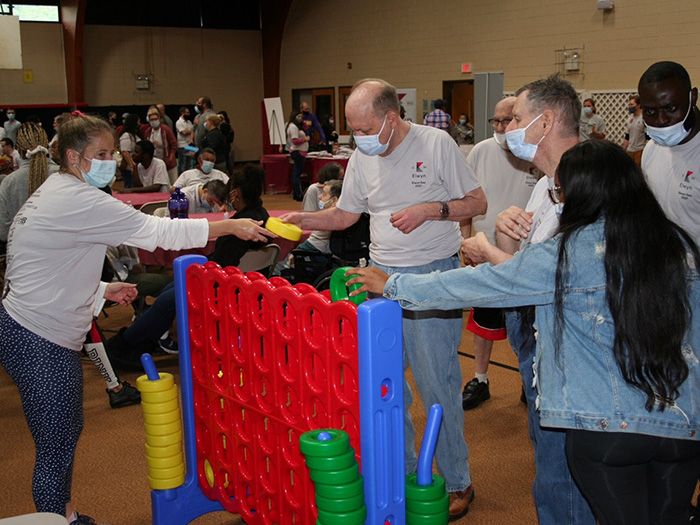
When Marie Johnson first interviewed for a risk management position with The Elwyn Foundation, she was peppered with questions about workers’ compensation.
That meeting took place in 2012, and Johnson now holds the title of executive director of risk management. Still, she remembers that moment from her initial interview vividly.
“Clearly, workers’ comp was a problem,” she said. “When interviewing for the position, they kept asking me what I knew about workers’ comp, what did I suggest about controlling it, what could we do to improve it.”
Once Johnson began her role with Elwyn, she experienced the troubles its workers’ comp program was encountering firsthand. The mere mention of workers’ comp would create antagonism.
“Our frequency was up, our severity was up, our litigation rates were up, and we had many disgruntled employees and supervisors. We were spending millions of dollars a year on a program that no one was happy with,” she said.
Johnson knew that a process as important to an organization as workers’ comp risk management could not continue as it was.
She, along with her team, also recognized that incorporating the pillars of Elwyn’s culture into the revitalization of its workers’ comp program would provide a stable framework, from the inside out.
Those pillars being integrity, high expectations, safety, accountability and sustainability. Over time, that incorporation worked. But Johnson and her team needed to be patient and persistent to make it happen.
The rebuilding of Elwyn’s workers’ comp program included a variety of changes and upgrades, and its results speak for themselves.
Elwyn’s turnaround success story is one to note and emulate, which is why Risk & Insurance® is pleased to name the organization a winner of the 2022 Teddy Awards.
Getting to Know Elwyn
The Elwyn Foundation is a nonprofit organization with the mission of providing a range of services to disabled people.
First founded in 1852 as a school for children with intellectual disabilities, the organization expanded its capabilities by developing programs in various service areas, including education, adult behavioral health and intellectual and developmental disabilities.
Services range from outpatient mental health services to residential treatment programs.
The very nature of the population Elwyn serves made its workers’ compensation risk management task that much more complex.
Employees would, at times, experience common workplace injuries, like neck and back strains from the physical demands of tending to their clients.
But because of the communities Elwyn serves, which were prone to behavioral outbursts, employees were also vulnerable to physical attacks.
Adding to the severity of these injuries, some employees also suffered post-traumatic stress following violent incidents.
Those complicating factors, absent a best-practices approach to dealing with injuries, led to a dynamic where Elwyn’s workers’ comp program was struggling to meet the immediate and long-term needs of its injured employees.
Increases in frequency, severity and litigated claims were made even more complex as some injured workers were turning to both their unions and OSHA regarding their claims.
“OSHA was always coming [on site],” Johnson said. “And the unions were so upset.”
A lack of vision and a lack of clarity around how the group handled its injured workers just made things worse.
“Employees were upset and frustrated with the lack of claims management, because there was confusion with the whole process,” Johnson said.
“[Workers’ comp] is confusing enough, but when someone got hurt, supervisors never knew what do.”
A key piece of any workplace culture — trust — was also breaking down.
Some of the negativity that accompanied the workers’ comp program stemmed from managers’ perception that some employees were allowed to abuse the system, while the employee experience was that injured workers often struggled to get paid benefits.
At the peak of its troubles, Elwyn had more than 80 workers’ comp claims in litigation.
While Johnson mentioned that she had plans to modernize and update several aspects of Elwyn’s risk management program, she knew that workers’ comp had to take priority.
She turned to Elwyn’s core values as the framework for the rebuilding of the workers’ comp program.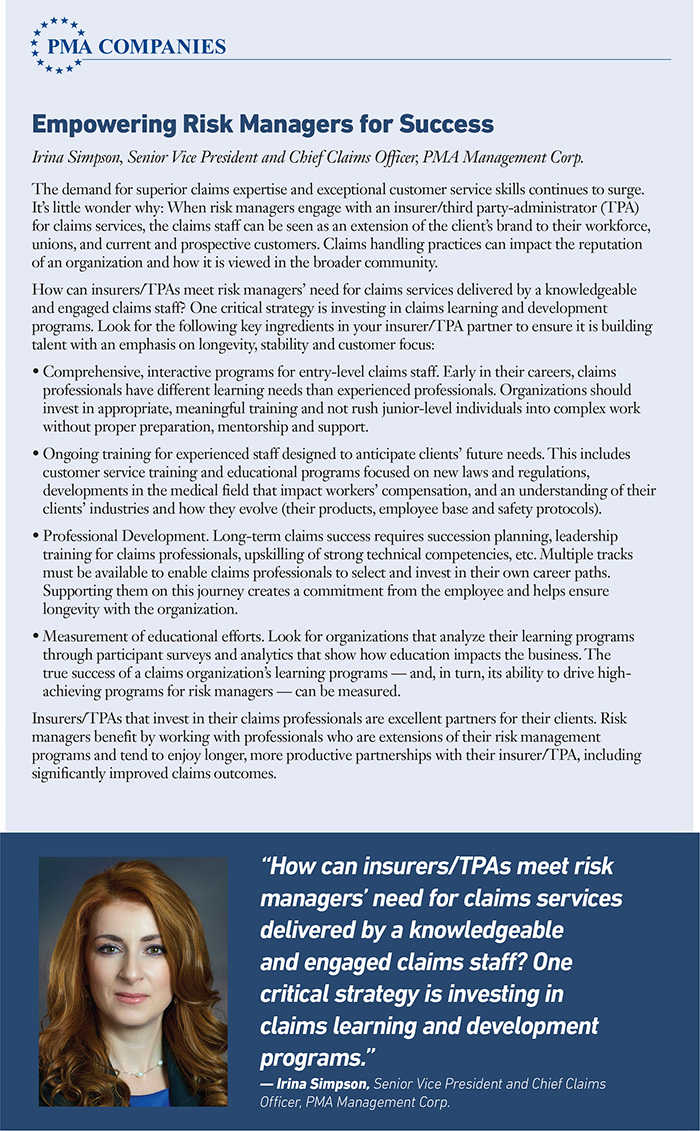
It Starts with Accountability
Elwyn’s values of integrity, high expectations, safety, accountability and sustainability, were not created to primarily address issues in workers’ comp, but it was certainly an optimal place for the organization to lay the program’s new framework.
Regina MacKenzie, Elwyn’s senior vice president and general counsel, works closely with Johnson and the risk management team under the umbrella of Elwyn’s legal risk and compliance department. The collaboration produced an overall evolution at Elwyn.
Focusing on those core values, specifically accountability, served as a wake-up call for Johnson, Mackenzie and their team.
It provided an opportunity to address how workers’ comp was viewed from a cultural perspective.
“Because of the nature of the work that we do, [employees] are, in a lot of instances, in a high-risk environment for workplace injuries,” MacKenzie noted.
“[We wanted] to create the safest environment possible for the people we are employing and make sure that when incidents do occur, they get addressed.”
Once this hurdle was addressed, the team could then approach the other weak spots in the program.
Tight Leashes and Light Duty to the Rescue
As the professionals at Elwyn began to change the stigma around workers’ comp, so came more alterations to the program itself.
One small but impactful change came in the form of a survey that Elwyn’s risk management and workers’ comp professionals would send to workers the day their injury occurred.
The purpose of the survey was to ensure the employee knew Elwyn cared about their overall well-being, and to seek feedback from the employee to mitigate the risk of a similar injury ever taking place again.
Other actions Elwyn implemented in its rebuilt program included writing a clear and concise workers’ comp policy, setting up a 24/7 nurse triage hotline, and establishing clear lines of communication with union leaders so that any potential issues could be first addressed with Elwyn before contacting OSHA.
What stands out to both Johnson and MacKenzie is how Elwyn tackled the increased litigation within its workers’ comp department.
“[We] keep a tight leash on any kind of litigation matters [and] are aggressive about encouraging our attorneys to wrap up those matters as quickly as possible,” MacKenzie said.
She continued, “It’s better both time- and cost-wise [for the organization] to bite the bullet and settle the claim [quickly].”
This “tight leash” MacKenzie referred to also includes periodic claims reviews that allow for the team, along with attorneys and Elwyn’s TPA, to evaluate current workers’ comp claims and potentially improve the way claims are being handled.
“These are really productive sessions,” MacKenzie said. “[At times] we’re trying to understand a litigation strategy and deciding [whether to] go a different path. Collaboration has been really important in turning the program around.”
And turn around it did.
Comparing numbers from 2012, around the time of Johnson’s hire, to 2022, Elwyn’s workers’ comp program has seen exceptional numbers.
In 2012, the organization had 81 claims in litigation, compared to this year’s mere eight claims in litigation.
Johnson and MacKenzie also discussed the successful implementation of Elwyn’s light duty program for its injured workers.
Prior to the introduction of its light duty program, Elwyn primarily sent injured workers home if they had restrictions as to how they could function on the job, according to Johnson.
This stemmed from a lack of education and resources allocated to clearly defining a light duty program and figuring out exactly what injured workers could do while recovering.
While educating staff on light duty opportunities was crucial, Johnson said that consistently leading from a mindset of respect, dignity and engagement has been the core driver of positive change.
“Instead of looking at what their disability was, we would ask the employee, ‘What can you do?’ ” she said.
Employees are vital collaborators throughout the light duty process and provide input on any modifications, if needed or desired.
Elwyn also ensured that whatever light duty work the injured employee was doing was not mere “busy work,” but rather duties that were productive, essential to the organization, and allowed employees to feel valued and needed during recovery.
The light duty program’s success can also be demonstrated with data; the group’s number of days away from work in 2012 was 1182, rooted in 33 claims.
By 2020, that was reduced to 90 days away from work within only five claims. In total claims, Elwyn has had a notable decrease.
Prior to 2012, Elwyn was seeing 516 claims every year, compared to 247 claims per year in the years after 2012.
Both Johnson and MacKenzie emphasize that stepping back, looking at the big picture and keeping a focus on Elwyn’s core values has been the key driver of the rebuilding of its workers’ comp program.
Values like integrity and safety provide Elwyn with the strong backbone to truly serve its injured workers and foster a healthy and productive recovery experience.
“All of our employees were expected to honor and follow our core values,” Johnson said.
“There’s no reason why, as a workers’ comp program, we wouldn’t do that too.” &
Marie Johnson and representatives from all of this year’s Teddy Award winners will gather in October at National Comp 2022 for a special Q&A presentation. Meet the winners and learn more about their programs.

